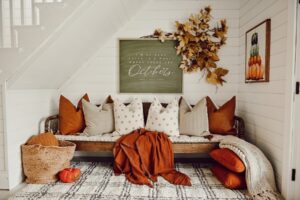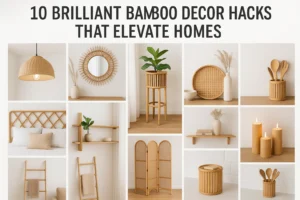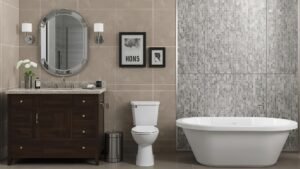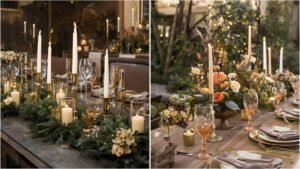The art of indoor plant cultivation has experienced an unprecedented renaissance in recent years, with millions of plant enthusiasts seeking innovative ways to showcase their beloved green companions. Among the most effective solutions for creating stunning plant displays are custom DIY Plant Stand Ideas that not only elevate your plants literally but also transform them into living art pieces that enhance your home’s aesthetic appeal.
Plant stands serve far more than mere decorative purposes in modern indoor gardening. These elevated platforms provide crucial benefits for plant health by improving air circulation around foliage, optimizing light exposure for photosynthesis, and preventing root rot that commonly occurs when pots sit directly on floors. The strategic positioning offered by well-designed stands creates microclimates that many houseplants require to thrive in indoor environments.
The beauty of creating your homemade plant stands lies in the perfect marriage of functionality and personalization. Unlike mass-produced alternatives that often fail to complement your unique interior design or accommodate specific plant sizes, DIY projects allow you to craft pieces that seamlessly integrate with your existing décor while addressing your collection’s particular needs. Whether you’re working with a compact studio apartment or a spacious family home, custom DIY Plant Stand Ideas can maximize your growing space without overwhelming your living areas.
Furthermore, the financial advantages of DIY construction cannot be overstated. Professional plant furniture often carries premium price tags that can quickly drain budgets, especially when building extensive indoor plant collections. By investing in basic materials and applying fundamental crafting skills, you can create stunning displays that rival expensive designer pieces at a fraction of the cost. This economic efficiency allows you to redirect saved funds toward expanding your plant collection or investing in specialized growing equipment.
The satisfaction derived from creating functional art with your own hands adds an intangible value that store-bought items simply cannot match. Each DIY plant stand becomes a testament to your creativity and craftsmanship, carrying personal significance that enhances your emotional connection to both the stand and the plants it supports. This deeper engagement often translates into more attentive plant care and greater appreciation for your indoor garden ecosystem.
Why DIY Plant Stand Ideas Over Store-Bought Options
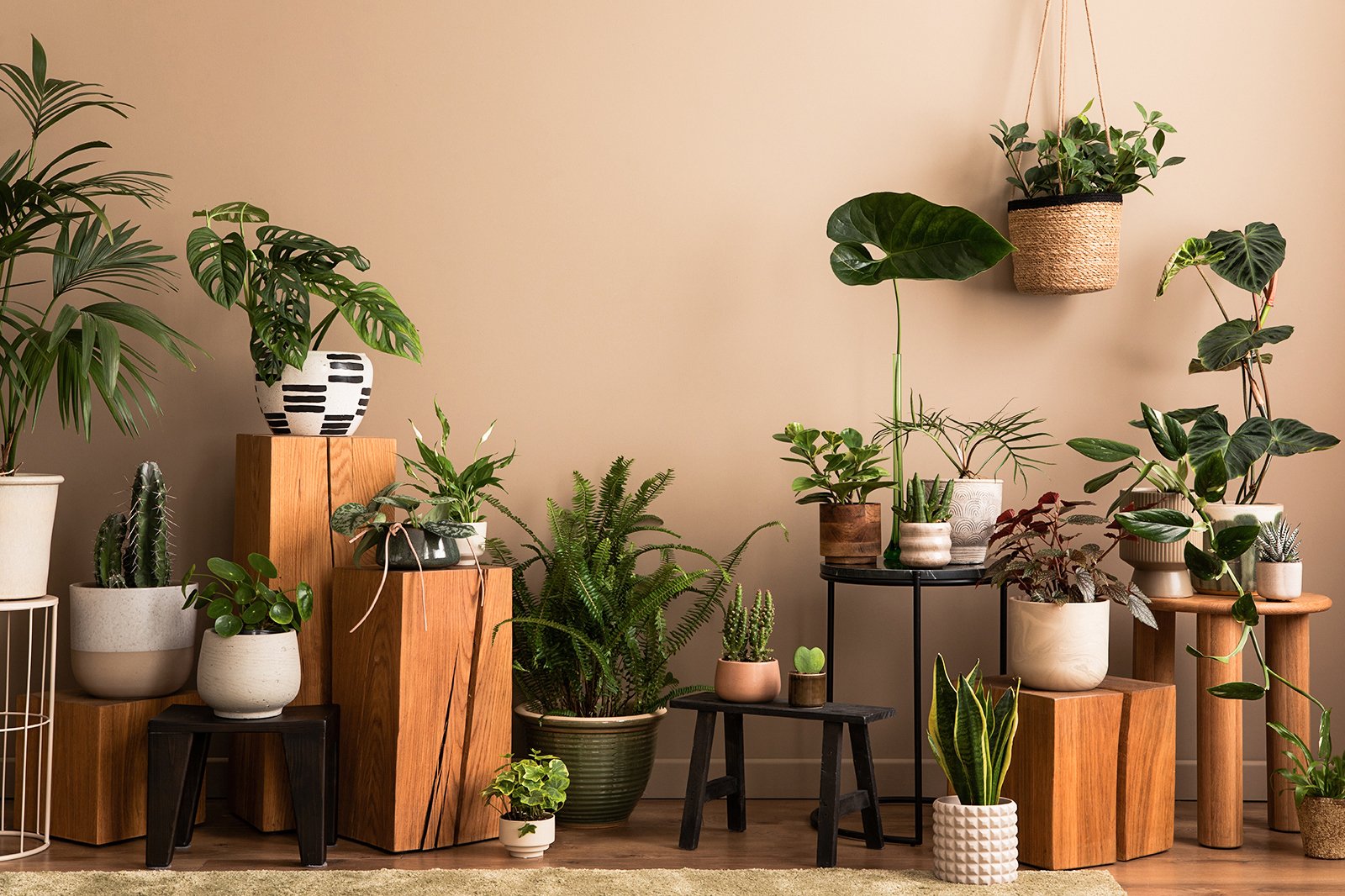
Customization and Perfect Fit
The primary advantage of DIY plant stands lies in their complete customization potential. Every home presents unique spatial challenges, from awkward corners and varying ceiling heights to specific color schemes and architectural features. Store-bought stands are manufactured to appeal to broad markets, often resulting in generic designs that fail to maximize your space’s potential or complement your interior aesthetic.
When you design your plant stands, you control every aspect of the final product. Dimensions can be precisely calculated to fit specific spaces, heights can be optimized for your plants’ light requirements, and materials can be selected to match or complement existing furniture. This level of customization ensures that your indoor plant display appears intentionally designed rather than haphazardly assembled.
Enhanced Plant Health Benefits
Elevated plant positioning through thoughtfully designed stands provides numerous horticultural advantages that directly impact plant vitality and longevity. Proper air circulation around plant containers prevents the stagnant conditions that encourage fungal growth, pest infestations, and bacterial diseases. This improved airflow is particularly crucial for tropical houseplants that evolved in environments with constant air movement.
The vertical arrangement capabilities of custom plant stands allow you to create layered displays where each plant receives optimal light based on its specific requirements. Sun-loving species can occupy top tiers near windows, while shade-tolerant varieties thrive in lower positions. This strategic placement maximizes the utilization of available natural light while preventing competition between plants.
Essential Tools and Materials for DIY Plant Stand Projects
Material Selection Guide
Successful DIY plant stand construction begins with selecting appropriate materials that balance durability, aesthetics, and budget considerations. Wood remains the most versatile and beginner-friendly option, offering excellent workability and natural beauty that complements plant displays. Softwoods like pine provide affordability and ease of cutting, while hardwoods such as oak or maple deliver superior longevity for long-term investments.
Metal materials, including copper pipes, steel rods, or aluminum tubing, create contemporary, industrial-style stands with exceptional strength-to-weight ratios. These materials excel in modern and minimalist interiors while supporting heavier plant collections without bulk. Bamboo presents an eco-conscious alternative that brings organic warmth while maintaining structural integrity and sustainability credentials.
Repurposed materials offer unique character and environmental benefits while reducing project costs. Vintage wooden crates, old ladders, discarded furniture pieces, and architectural salvage can be transformed into distinctive plant stands with minimal modification. These materials often possess patina and craftsmanship quality that adds instant personality to your indoor plant arrangements.
Required Tools and Equipment
| Tool Category | Essential Items | Recommended Upgrades |
|---|---|---|
| Cutting | Hand saw, utility knife | Circular saw, miter saw |
| Drilling | Basic drill, standard bits | Impact driver, specialty bits |
| Measuring | Tape measure, square | Digital calipers, laser level |
| Sanding | Manual sandpaper, sanding block | Random orbital sander, dust collection |
| Finishing | Brushes, foam rollers | Paint sprayer, airless system |
| Assembly | Screwdrivers, clamps | Pocket hole jig, biscuit joiner |
Project 1: Minimalist Wooden Tower Plant Stand
Design Philosophy and Planning
The minimalist wooden tower plant stand embodies the “less is more” philosophy that defines contemporary interior design. This vertical structure maximizes growing space while maintaining a clean, uncluttered appearance that won’t overwhelm smaller rooms or compete with existing furniture. The tower design works exceptionally well for creating dramatic focal points while accommodating multiple plants in a compact footprint.
Strategic planning is essential for tower stand success. Consider the mature size of your indoor plants when determining shelf spacing, allowing adequate room for growth without requiring frequent modifications. Trailing plants like pothos or string of pearls create beautiful cascading effects from upper levels, while structural plants such as snake plants or ZZ plants provide visual anchoring at the base.
Step-by-Step Construction Process
Begin construction by cutting your lumber to precise measurements, typically using 1×4-inch boards for the frame and 1×8-inch shelves for plant platforms. The tower’s height should be proportional to your room’s scale, generally ranging from 4-6 feet for optimal visual balance. Sand all components thoroughly, progressing from 120-grit to 220-grit paper for smooth, splinter-free surfaces.
Assembly requires careful attention to ensure the tower remains perfectly vertical and stable. Use wood screws rather than nails for superior holding power, and consider adding corner braces or back panels for additional stability if you plan to display heavier specimens. Apply your chosen finish in thin, even coats, allowing proper drying time between applications for professional results.
Project 2: Industrial Pipe Plant Stand
Modern Industrial Aesthetic
The industrial pipe plant stand brings urban sophistication and contemporary edge to indoor plant displays. This design aesthetic celebrates the beauty of functional materials, transforming utilitarian plumbing components into stylish furniture that complements modern, loft-style, and industrial interior themes. The inherent strength of metal construction allows for innovative cantilever designs and minimal profiles that would be impossible with traditional materials.
Metal plant stands offer exceptional durability and weather resistance, making them suitable for transitional spaces like sunrooms or covered patios where plants might be moved seasonally. The neutral tones of galvanized steel or the warm patina of copper pipes provide versatile backgrounds that allow plant colors and textures to take center stage in your displays.
Working with Pipe Materials and Fittings
Pipe construction requires different techniques compared to traditional woodworking, but the modular nature of plumbing fittings simplifies assembly for beginners. Galvanized steel pipes provide maximum strength and affordability, while copper offers superior aesthetics and natural antimicrobial properties. PVC pipes work well for lightweight applications and offer the easiest cutting and joining processes.
Plan your design carefully, as modifications become more difficult once pipes are cut. Most home improvement stores offer pipe cutting services, ensuring clean, square cuts that facilitate proper fitting assembly. Thread compound or plumber’s tape ensures secure connections, while floor flanges provide stable mounting points for vertical supports.
Project 3: Floating Corner Plant Shelf System
Maximizing Underutilized Space
Corner plant shelves represent one of the most efficient approaches to expanding your growing space without sacrificing valuable floor area. These space-saving plant stands transform awkward room corners into productive growing zones while creating architectural interest that draws the eye upward and makes rooms appear larger.
The floating design eliminates the visual bulk of traditional stands, creating the illusion that plants are suspended in mid-air. This ethereal quality works particularly well in modern and contemporary interiors where clean lines and minimal visual weight are priorities. Corner shelving systems can be designed to accommodate rooms with any ceiling height, from compact spaces to dramatic two-story areas.
Installation and Support Considerations
Proper wall anchoring is crucial for floating shelf safety and longevity. Locate wall studs using electronic stud finders and use appropriate fasteners rated for the expected load. Heavy-duty brackets distribute weight across larger wall areas, reducing stress on individual anchor points and preventing damage to drywall or plaster surfaces.
Consider the watering and drainage requirements of your plant collection when planning shelf depths and spacing. Removable drip trays protect wall surfaces from water damage while allowing easy cleaning and maintenance. Strategic placement of shelves at comfortable heights facilitates routine plant care without requiring step stools or uncomfortable reaching.
Project 4: Rustic Ladder Plant Display

Farmhouse Charm and Functionality
The rustic ladder plant stand perfectly captures the essence of farmhouse and cottage-core interior design trends while providing exceptional functionality for indoor plant arrangements. This design transforms a simple ladder structure into a vertical garden that accommodates plants of various sizes and growth habits. The natural wood grain and weathered appearance add warmth and character that complements both traditional and eclectic decorating styles.
Vintage ladders sourced from antique shops or estate sales often possess superior construction quality and unique character that cannot be replicated in new construction. However, building your ladder allows complete control over dimensions, spacing, and finish to match your specific needs and aesthetic preferences perfectly.
Construction and Weathering Techniques
- Lumber selection: Choose naturally rot-resistant species like cedar or redwood for longevity
- Joint construction: Use traditional mortise and tenon joints for authentic appearance and superior strength
- Distressing methods: Apply wire brushing, strategic sanding, and selective staining for aged appearance
- Hardware choices: Select galvanized or black iron hardware that complements the rustic aesthetic
- Protective finishes: Apply penetrating oil finishes that enhance wood grain while providing moisture protection
Safety considerations are paramount when repurposing vintage ladders, as older construction may not meet modern safety standards. Thoroughly inspect all joints, rungs, and hardware before modification, and reinforce any weak areas that could compromise structural integrity under plant loads.
Project 5: Macrame Hanging Plant Stand
Bohemian Style and Versatility
Macrame plant stands introduce texture, movement, and artisanal appeal to indoor plant displays while maximizing vertical growing space. This ancient rope-working craft has experienced a remarkable renaissance in contemporary interior design, offering a perfect counterpoint to the hard lines and synthetic materials prevalent in modern homes. The handcrafted nature of macrame complements the organic qualities of plants while adding bohemian sophistication to any room.
The versatility of macrame construction allows for infinite customization in both size and style to accommodate different plant containers and room aesthetics. Single-plant hangers create elegant accent pieces, while complex multi-tiered displays can showcase entire collections in dramatic aerial arrangements. Hanging plant stands work particularly well in rooms with high ceilings or near large windows where plants can benefit from optimal light exposure.
Macrame Techniques and Cord Selection
Learning fundamental macrame knots opens endless possibilities for creating custom hanging plant displays. The square knot forms the foundation of most plant hanger designs, providing secure holding power while creating attractive geometric patterns. Lark’s head knots offer clean attachment points, while spiral patterns add visual interest and accommodate plants with asymmetrical growth habits.
Cord selection significantly impacts both the appearance and durability of macrame plant stands. Natural cotton rope provides traditional aesthetics and comfortable handling during construction, while synthetic materials offer superior weather resistance for plants that transition between indoor and outdoor environments. Consider the weight of your heaviest plants when selecting cord thickness, as mature specimens require substantial support systems.
Plant Selection and Arrangement Strategies
Choosing Compatible Plants for Stand Displays
Successful plant stand styling requires careful consideration of each species’ growth habits, light requirements, and visual characteristics. Architectural plants with strong vertical lines work exceptionally well as anchor points in multi-level displays, while trailing varieties create beautiful cascading effects that add movement and softness to structured arrangements.
Consider the mature size of each plant when planning long-term displays, allowing adequate space for growth without overcrowding. Seasonal rotation strategies can maximize the impact of your collection by featuring different plants during their peak appearance periods while resting others in less prominent positions.
Creating Visual Balance and Flow
Plant arrangement follows many of the same principles as traditional flower arranging, with height variation, color harmony, and textural contrast creating engaging compositions. The rule of thirds applies to plant displays just as effectively as to photographic composition, creating more dynamic arrangements than symmetrical groupings.
Foliage colors and patterns should complement rather than compete with each other, using plants with similar tones as foundations while adding contrasting specimens as accent points. Textural variety between smooth, glossy leaves and fuzzy, textured foliage creates visual interest that keeps viewers engaged with your displays.
Maintenance and Longevity Tips
Routine Care and Inspection
DIY plant stands require periodic maintenance to ensure continued safety and appearance. Wood constructions benefit from seasonal inspection for loose joints, water damage, or pest infiltration. Metal stands should be checked for rust formation or corrosion, particularly in high-humidity environments near plant watering areas.
Refinishing schedules depend on the materials used and environmental exposure. Indoor stands typically require touch-ups every 2-3 years, while stands that experience moisture exposure may need annual attention. Keep matching stains or paints available for quick repairs that prevent minor damage from becoming significant problems.
Also Read: Modern Millionaire Living Room Ideas Luxury Decor Guide 2025
Conclusion
Creating DIY plant stands offers an enriching opportunity to enhance your indoor gardening experience while expressing personal creativity and craftsmanship. These five diverse projects demonstrate that stunning plant displays are achievable for crafters of all skill levels, from simple hanging macrame designs to more complex wooden constructions. The combination of improved plant health, optimized space utilization, and enhanced aesthetic appeal makes DIY stands an excellent investment in both your home’s beauty and your plants’ well-being.
The versatility inherent in these designs ensures that every indoor plant enthusiast can find approaches that suit their specific requirements, whether dealing with space limitations, budget constraints, or particular style preferences. As your plant collection evolves and expands, these handcrafted stands can be modified, extended, or reconfigured to accommodate changing needs and growing expertise.
The satisfaction of creating beautiful, functional pieces for your indoor garden extends far beyond the initial construction process. Each time you care for your plants or simply enjoy their presence in your home, you’ll be reminded of the creativity and effort invested in their presentation. This deeper connection often results in more attentive plant care and greater appreciation for the role that green spaces play in creating healthy, beautiful living environments.
FAQs
Q1: What is the best wood type for beginner DIY plant stands?
Pine wood is ideal for beginner DIY plant stands due to its affordability, availability, and easy workability. It accepts stains and paints well, making it versatile for various design styles. For increased durability, consider cedar, which offers natural moisture resistance perfect for indoor plant environments.
Q2: How do I ensure my homemade plant stand won’t tip over with heavy plants?
Prevent tipping by making the base width at least one-third of the total height. Use heavier materials for the base, add ballast weight, or secure tall plant stands to the walls. Always place heavier potted plants on lower levels and test stability with weighted containers before adding live plants.
Q3: Can I use treated lumber for indoor plant stands?
Avoid treated lumber for indoor plant stands as the chemicals used in pressure treatment can off-gas harmful substances into your living space. Instead, use naturally rot-resistant woods like cedar or apply appropriate sealers to untreated lumber for moisture protection around houseplants.
Q4: What’s the ideal spacing between shelves on tiered plant stands?
Space shelves 12-18 inches apart to accommodate most standard plant containers while allowing room for growth. Consider your specific plants’ mature heights and ensure adequate clearance for watering and maintenance access. Trailing plants may require additional vertical space below their shelves.
Q5: How much weight can a typical DIY wooden plant stand support?
A well-constructed wooden plant stand using 2×4 lumber and proper joinery techniques can typically support 75-150 pounds, depending on design and wood species. Always calculate the combined weight of pots, soil, water, and plants when determining capacity, and test with equivalent weights before adding your plant collection.



